Langtang Valley Trek - 11 Days of Real Nepal
Sick of the same Everest crowd and Annapurna buzz? The Langtang Valley Trek is that off-grid Himalayan hit you didn’t know you needed. It’s 11 days of pure Nepal — raw, unfiltered, no velvet ropes. Think creaky teahouses run by Tamang families, trails carved through landslides and whispering pines, and mountains so close you feel like you could punch a glacier. This trek doesn’t flex with fame — it earns your respect with its altitude, culture, and unshakable soul. From Syabrubesi to Kyangjin Gompa, every step slaps you with something real — yaks, monks, waterfalls, and that dizzy blend of exhaustion and awe that only the Langtang Himalayas can serve.
First Days: Jungle Walking & Village Life
Your feet hit the dirt trail and immediately know - this ain't no walk in the park. The first days sweat you through thick forests where monkeys chatter overhead like they're laughing at your city-soft legs. Every turn brings another waterfall crashing down mossy cliffs. You'll sleep in Tamang villages where the houses are painted sky-blue and the locals measure distance in "just 2 more hours, brother" (which means 4). The teahouses smell of wood smoke and boiled potatoes - basic but honest.
Middle Section: Altitude Hits Hard
Then the trail gets mean. The air starts cheating you - thinner, colder, like breathing through a straw. Those "stairs" made of uneven rocks aren't stairs at all, just nature's way of testing how bad you want this. Your calves scream. Your backpack feels like it's filled with bricks. But then - holy hell - you round a bend and Langtang Lirung slaps you across the face with its 7,000m of icy arrogance. Suddenly the pain makes sense.
Kyangjin: The Reward You Earned
The final push to Kyangjin Gompa is all wind, dust and yaks that look at you like you're the weird one. At 3,870m, the village appears like a mirage - a handful of stone houses clinging to the valley. That first sip of butter tea tastes like victory. The homemade yak cheese? Like nothing you've ever had (and nothing you'll find back home). When morning comes and sunlight ignites the glacier above you? That's when you realize - this is why we trek.
The Ugly Truths Nobody Mentions
Let's be real:
- The "toilets" are holes in the ground that get sketchier each day
- Some teahouse beds feel like sleeping on a bag of potatoes
- That one endless climb to Lama Hotel will make you question all your life choices
(But when you're sitting on a sun-warmed rock, eating dal bhat while snow peaks stare down at you? Every blister becomes worth it.)
Local Magic You Can't Fake
What makes Langtang special isn't just the mountains - it's the Tamang people. The grandmother spinning her prayer wheel who insists you drink one more tea. The kids who giggle at your broken Nepali. The way entire villages come alive at dawn with the clang of milk pails and smell of burning juniper. This isn't performative "culture" - it's real life happening around you.
Final Reality Check
November mornings hurt (-10°C in your sleeping bag). April afternoons sweat you through your shirt. The trail doesn't care about your Instagram plans. But for those willing to embrace the grind? Langtang gives you Nepal uncut - no filters, no pretenses, just mountains and people at their most authentic.
Langtang's Living Classroom: From Jungle to Glacier
Shyabrubesi to Lama Hotel: The Jungle Chapter
Your boots hit the trail at Shyabrubesi (1,500m) and immediately the forest swallows you whole. We're talking old-growth giants here - towering oaks with beards of moss, pine trees so tall they creak in the wind. The air smells like damp earth and something sweet - that's the rhododendrons (come March-April, these explode in pink and red blooms so vivid they look Photoshopped). Keep your eyes peeled:
- Monkey business: Gray langurs crash through the canopy, their babies clinging like furry backpacks.
- Birdlife: That flash of blue? Probably a Himalayan monal (Nepal's national bird looking like it flew out of a rainbow).
- River soundtrack: The Langtang Khola roars alongside you, milky with glacier melt.
Lama Hotel to Langtang Village: Where the Trees Get Weird
Around 2,800m, the forest starts tripping. The oaks shrink into twisted Himalayan birch with peeling skin-like bark. Silver fir trees appear, their needles smelling like Christmas gone wild. This is red panda territory (yes, the Firefox logo animal), though spotting one requires insane luck. More reliable:
- Yak convoys: These hairy trucks of the mountains clank past with bells ringing, leaving... souvenirs on the trail.
- The smell test: Catch a whiff of something musky? Might be a Himalayan black bear (don't worry, they're shy).
Langtang Village to Kyangjin: Above the Tree Line
Past 3,500m, trees surrender to dwarf juniper and alpine shrubs that cling to rocks like survivors. The real stars now:
- Glacier bling: Langtang Lirung's icy fangs loom closer, cracking and groaning like a living thing.
- Mountain goats: Sure-footed Himalayan tahrs (think grumpy old men with horns) patrol the cliffs.
- Sky dramas: Golden eagles ride thermals, while lammergeiers (bearded vultures with 3m wingspans) drop bones to crack them midair.
Kyangjin's Icy Playground
At the valley's end (3,870m), the landscape goes full moonscape - just glacial moraines, turquoise lakes, and yaks grazing where nothing else can. Dawn here is magic: sunlight hits the Langtang Glacier first, turning it from blue to blinding white while Himalayan griffons circle like winged sentinels.
The Ugly Truth About Nature Here
- Leeches in monsoon (June-Sept) - they'll find your ankles no matter what.
- Altitude's toll: Fewer birds up high, but the ones you see (snow pigeons, alpine choughs) are tough as nails.
- Trash trails: Sadly, some idiots leave candy wrappers - pack yours out.
Why This Beats Zoo Visits
Where else can you:
- Watch wild honey hunters rope-climb cliffs (spring/autumn)?
- Spot musk deer at dawn, their fangs giving them vampire vibes?
- Breathe air so clean it makes your city lungs panic?
Langtang Valley Trek: The Complete Route Breakdown
This isn't just a trek - it's a slow reveal of Nepal's wildest valley. From Kathmandu's chaos to Kyangjin's icy silence, here's what your boots will actually experience:
Kathmandu to Syabru Besi: The Warm-Up
That 7-hour drive out of Kathmandu isn't just a transfer - it's Nepal uncensored. You'll watch city smog fade into rice terraces, then hold your breath as the road clings to cliffs above the Trishuli River. Syabru Besi (1,460m) is your first taste of trekking life: basic lodges, stray dogs, and the Langtang Khola roaring like it's impatient to guide you upstream.
The Climb Begins: Syabru Besi to Lama Hotel
Day one on trail hits like a wake-up call. The path winds through jungle so thick, sunlight barely touches the ground. You'll cross suspension bridges that sway under your weight, pass waterfalls that mist your face, and maybe spot langur monkeys judging your pace. Lama Hotel (2,470m) isn't actually a hotel - just a cluster of teahouses where the walls are paper-thin and the dal bhat tastes like salvation after 6 hours of uphill.
Into the Big Mountains: Lama Hotel to Mundu
The forest starts thinning here, trees shrinking as if scared of the heights. At Rimche, catch your first glimpse of Langtang Lirung - if the weather plays nice. Mundu (3,540m) appears suddenly, a stone village rebuilt after the 2015 quake, where yaks outnumber people and the air starts feeling thin. Pro tip: Drink water like it's your job.
The Crown Jewel: Mundu to Kyangjin Gompa
This is where Langtang shows off. The valley opens wide, revealing a U-shaped glacial circus with Kyangjin (3,870m) at its heart. Prayer flags snap in the wind, the giant cheese factory (yes, really) smells like fermented milk, and that 360° view of 7,000m peaks? Worth every blister.
Rest Day Realities in Kyangjin
That "rest day" isn't lazy - it's acclimatization masquerading as exploration. Hike to Kyangjin Ri (4,350m) for sunrise and your lungs will protest while your camera thanks you. Or visit the Buddhist monastery where butter lamps flicker beside avalanche debris. Either way, you'll sleep like the dead that night.
The Return: Same Trail, New Perspective
Going back down feels like rewinding a movie - same scenery, but now you know these trails. That teahouse where you spilled tea? There it is. That bend where you first saw Langtang Lirung? Now it feels like an old friend. Syabru Besi's hot shower will feel like a 5-star spa after a week of baby wipes.
Why This Route Works
- No repeat nights (except Lama Hotel) - fresh views daily
- Perfect altitude curve - no brutal jumps, just steady adaptation
- Culture in doses - from Kathmandu's temples to Tamang villages
Langtang Valley Trek: 10 Jaw-Dropping Moments That Make This Trek Special
Forget boring trek descriptions—this is the raw, unfiltered magic of Langtang Valley. No sugarcoating, no stock description—just the real highlights that'll sear themselves into your memory (and make your friends jealous).
- First Glimpse of Langtang Lirung (6,870m)
That heart-stopping moment when the clouds part at Rimche and Nepal's "Valley of Glaciers" punches you in the gut with its icy skyline. - Jungle Trails from Syabru Besi
Walking through old-growth forests so lush, you'll half-expect a red panda to photobomb your selfies. The air smells like wet earth and wild orchids. - Kyangjin's Famous Yak Cheese Factory
Where else can you snack on freshly made yak cheese at 3,870m while staring at glaciers? (Pro tip: Try the smoked variety—it's life-changing.) - Tamang Villages Reborn
The stone houses of Langtang Village, rebuilt after the earthquake with traditional blue shutters and resilience that'll humble you. - Sunrise at Kyangjin Ri (4,350m)
Huffing uphill in darkness to watch dawn set the glaciers on fire—worth every burning calf muscle. - Lammergeier Spotting
These dinosaur-sized vultures with 3m wingspans circling overhead like something from a fantasy novel. - Suspension Bridge Adventures
Those wobbly crossings over the Langtang Khola where you white-knuckle the rails while the river roars below. - Dal Bhat Power in Mundu
That first steaming plate of lentil stew at 3,540m tastes like heaven after a brutal climb. - Glacial Moraine Walks
The crunch of ancient ice underfoot near Kyangjin Gompa, where the landscape feels more moon than earth. - Syabru Besi's Victory Shower
That first hot water in 8 days feeling like a five-star spa (even if the bathroom's covered in mildew).
Langtang Valley Trek: The Brutally Honest Season Guide
Picking your trekking season in Nepal isn't just about weather—it's about avoiding leech attacks, scoring crystal-clear mountain views, and not getting snowed in at 4,000m. Here's the real deal on Langtang Valley through the year:
🌿 Spring (March-May) - The Sweet Spot
Why everyone loves it:
- Rhododendron rage: The forests explode in pink/red blooms (late March-April peak)
- Perfect temps: Days at 15-20°C, nights just below freezing at Kyangjin
- Wildlife party: Birds migrating north, red pandas more active
But...
- Crowds: Especially mid-April when Kathmandu empties for trekking season
- Hazy mornings: Dust from India sometimes blurs those epic mountain views
- Best for: Photographers, bird nerds, flower lovers
☀️ Summer/Monsoon (June-September) - The Wildcard
Secret perks:
- Empty trails: You'll have teahouses to yourself
- Lush: Waterfalls turn into thunderous shows, forests go jungle-mode
- Cheap deals: Guides and lodges desperate for business
Reality checks:
- Leech apocalypse: They'll find your ankles no matter how much salt you use
- Landslide risk: Some trail sections get sketchy (ask locals daily)
- Peak bug season: Mosquitoes in Syabru Besi could carry you away
- Best for: Botanists, budget travelers
🍂 Autumn (October-November) - The Crowd Pleaser
Why it's gold standard:
- Crisp views: Himalayan peaks look photoshopped against blue skies
- Festival season: Dashain/Tihar celebrations in villages (think: goat sacrifices and kids flying kites)
- Comfy temps: Days ~10-15°C, nights chilly but manageable
Downsides:
- Book early: Teahouses fill up, especially late October
- Cold snaps: Early November can bring surprise snow at Kyangjin
- Best for: First-timers, peak baggers, culture vultures
❄️ Winter (December-February) - The Hardcore Option
Bragging rights:
- Snow magic: Langtang Lirung draped in white, frozen waterfalls
- Zero crowds: You'll feel like the last person on Earth
- Starry nights: Skies so clear you'll see the Milky Way from Kyangjin
Survival mode:
- -15°C nights: Sleeping bags get tested for real
- Short days: Trekking daylight ends by 4:30pm
- Route changes: Some high trails may close due to snow
- Best for: Solitude seekers, winter warriors, photographers
📅 Langtang Seasons at a Glance
(🥾=Trail quality, 🦌=Wildlife activity)
💡 Pro Tips for All Seasons
- April/May: Start early daily to beat afternoon cloud cover
- June-Sept: Pack leech socks (yes, that's a real product)
- Oct-Nov: Layers are key—glacier winds bite hard
- Dec-Feb: Solar chargers fail in cold; keep electronics in your sleeping bag
Langtang Valley Trek: The Truth About Food and Beds
Let’s be real — you’re not signing up for luxury. The Langtang Valley Trek is raw, scenic, and beautiful, but it’s also humble when it comes to food and beds. You won’t find room service or buffet breakfasts, but you will sit cross-legged with trekkers from all over the world, sipping hot soup in smoky kitchens that smell like home. After a long, cold hike, nothing hits harder than a thermos of black tea or a fresh plate of dal bhat served by a smiling local. The food here isn’t fancy, but it’s warm, filling, and comforting — and honestly, when you’re at 3,000+ meters in the Himalayas, that’s all your body really asks for. The beds? Basic. Thin mattresses, warm blankets, wooden walls that sometimes creak in the wind — but after those uphill climbs, they’ll feel like heaven. This is trekking life — simple, pure, unforgettable.
Sleeping Arrangements: From Basic to “Are You Serious?”
Your nights will be spent in teahouses - simple mountain lodges run by local families. At lower villages like Syabru Besi and Lama Hotel, you'll get basic rooms with wooden walls so thin you'll hear every cough and whisper from next door. The beds? Thin mattresses with blankets that have seen better days. Hot showers exist but don't get too excited - the water might be lukewarm at best.
As you climb higher to Langtang Village and Kyangjin Gompa, things get more rustic. The rooms get colder - you'll be wearing your thermals to bed. Bathrooms turn into basic squat toilets. Forget showers up here - you'll be cleaning up with wet wipes like everyone else. The dining room becomes your favorite place because it's the only spot with a stove for heat. So as per today the fooding and loding has improved a lot in major stops like Langtang Valley and Kyangjin Gompa. One can find luxury stays with great services today. Tall buildings made out of cement and mainly focused for foreign travellers. The interesting fact of Kyangjin is you can find a bank “PRABHU BANK” with availabilty of ATM service too.
Eating to Survive the Trails
Food here is about fuel, not fine dining. Breakfast is your friend - think thick Tibetan bread fried golden with honey, or warm porridge that sticks to your ribs. Eggs come any way you want them as long as you want them scrambled or boiled.
Lunch and dinner revolve around dal bhat - the trekker's best friend. It's rice, lentils, and veggies with unlimited refills to keep your energy up. When you get tired of that (and you will), there are noodles cooked every way possible and momos - those delicious dumplings that taste even better when dipped in spicy sauce.
Up in Kyangjin, don't miss the famous yak cheese from the local factory. It's smoky, strong, and perfect with black tea. Speaking of tea - you'll drink gallons of it. The garlic soup might smell funny but drink it anyway - it helps with the altitude.
Reality Checks
Let's be honest - hygiene is basic. Wash your hands like your life depends on it. Vegetarians will get by but shouldn't expect fancy meals. Coffee lovers should bring their own instant - what's available tastes like brown water. And that meat on the menu? Probably walked up the same trail you did days ago.
The dining rooms are where the magic happens. You'll sit around smoky stoves swapping stories with other trekkers, playing cards by headlamp light, and falling asleep by 8 PM because the solar lights have died. It's not luxury - it's better. It's real.
Pro Tips From the Trail
Pack snacks - chocolate bars and nuts will save you on tough days. Always have water purification tablets. And that extra pair of socks? Worth its weight in gold when your feet are cold at night.
This is mountain living at its most authentic - where a simple meal tastes incredible after a day of hiking, and a basic bed feels like heaven when you're exhausted. You won't get pampered, but you'll get something better - stories to tell for years.
"Langtang Trek Permits Made Simple: What You Need & How to Get Them"
Don't let paperwork kill your trek vibe. Here's the no-stress guide to Langtang permits - what you need, where to get them, and how much to pay. No confusing jargon, just straight facts.
1. TIMS Card (Trekkers' Information Management System)
What it is: Basically Nepal's way of keeping track of trekkers
Cost:
- Independent trekkers: NPR 2,000 (~$15)
- Group trekkers (with guide): NPR 1,000 (~$7.50)
Where to get:
- Kathmandu: Nepal Tourism Board office in Bhrikuti Mandap
- Or let your trekking agency handle it (easiest option)
(Pro tip: The "group" rate applies even if you're solo but booked through a company)
2. Langtang National Park Entry Permit
What it covers: Your ticket to enter the protected area
- Cost: NPR 3,000 (~$22) per person
- where to get: Same as TIMS card (can do both at once)
(Bonus: Your permit money helps protect the park's wildlife)
3. What You DON'T Need
- Restricted Area Permit (not required for Langtang)
- Guide compulsory? No, but highly recommended
- Special COVID permits? Not anymore (as of 2024)
How to Get Permits (2 Easy Ways)
Option 1: Do It Yourself in Kathmandu
- Go to Nepal Tourism Board office (near Thamel)
Must Bring:
- Passport copy
- 2 passport photos
- Cash (NPR)
- Fill out forms (they'll help)
- Get permits in 30 minutes
Option 2: Let Your Agency Handle It
- Best for stress-free prep
- Usually included in package deals
- They'll need your passport details in advance
Important Rules to Remember
- Always carry permits - Rangers check at Syabru Besi & Kyangjin
- No plastic bottles in national park (bring reusable)
- Drones? Strictly forbidden without special permit
- Lost your permit? NPR 500 fine to replace it
Pro Tips From Locals:
- Get permits the day before your trek (office closes weekends)
- Keep permits in waterproof bag (rain destroys paper fast)
- Take photos of permits as backup on your phone
"Langtang Valley Trek: The Honest Truth About Fitness & Difficulty"
Let’s cut to the chase—this isn’t a walk in the park. The Langtang Valley Trek will test your legs, lungs, and willpower. But with the right prep, anyone with decent fitness can conquer it. Here’s exactly what to expect and how to get ready:
🚶 Daily Grind: What You’ll Actually Be Doing
- Walking: 5-7 hours/day (10-15 km) on rocky, uneven trails
- Altitude: Starting at 1,460m (Syabru Besi) → Peaking at 4,350m (Kyangjin Ri)
- Elevation Gain: Some days climb 800m+ (your thighs will feel it)
- Terrain: Stone stairs, dirt paths, river crossings, and the occasional "why is this so steep?!" section
(Real Talk: If you can hike 5 hours with a backpack on weekends, you’ll survive. If you get winded climbing stairs, train harder.)
💪 Fitness Level Needed
You’re Ready If You Can:
- Walk 4-5 hours without collapsing
- Climb 20 flights of stairs without needing oxygen
- Carry a 5-8kg daypack (water, snacks, layers)
You’ll Struggle If You:
- Think "cardio" means chasing the ice cream truck
- Last hiked in 2010 (and it was to the fridge)
- Can’t handle cold, thin air (Kyangjin feels like Mars)
⚠️ The Big Challenges
- Altitude: Above 3,000m, the air gets thinner. Headaches? Normal. Puking? Not ideal.
- Fix: Go slow, drink water like it’s your job, and sleep lower than you hike.
- Endless Stairs: The trail to Lama Hotel is basically a StairMaster made of rocks.
- Fix: Train on hills or stadium steps with a loaded backpack.
- Weather Mood Swings: Sunshine → hail → freezing wind in 2 hours.
- Fix: Layer like an onion. Merino wool is your best friend.
📊 Difficulty Rating (1-5)
🏋️ How to Prep (No Gym Required)
1. Cardio:
- Do this: Walk uphill 1 hour/day (or treadmill at max incline)
- Or this: Stair climbs with a backpack (add weight weekly)
2. Leg Strength:
- Squats, lunges, and calf raises (your knees will thank you)
3. Mental Game:
- Hike in rain/cold once a week. If you whine, do 10 more squats.
- Pro Tip: Break in your boots before the trek. Blisters ruin lives.
🚨 Who Should Not Do This Trek?
- People with serious knee/back issues (those descents hurt)
- Anyone who hates cold (nights at Kyangjin = -10°C)
- If you expect hot showers and Wi-Fi (this is the mountains, bro)
Conclusion:
The Langtang Valley offers a rich cultural experience, blending Buddhist, Bon, and Hindu influences into a unique tapestry of traditions. The best times to visit provide opportunities to immerse yourself in the region's vibrant cultural heritage while enjoying its natural beauty.
Pressed for time or craving a distinctive adventure? Experience the beauty of Langtang Valley from above with our Langtang Valley Helicopter Tour , offering a quick yet unforgettable journey into the heart of the Himalayas.
🧭 Alternative Tours & Packages
- Gosaikunda Trek
A scenic and sacred trekking route through lush forests and high alpine terrain leading to the revered Gosaikunda Lakes, ideal for both spiritual seekers and nature lovers.
- Gosaikunda Helicopter Tour
Fly over the sacred alpine lakes of Gosaikunda and enjoy panoramic Himalayan views on this short and spiritually uplifting helicopter journey.
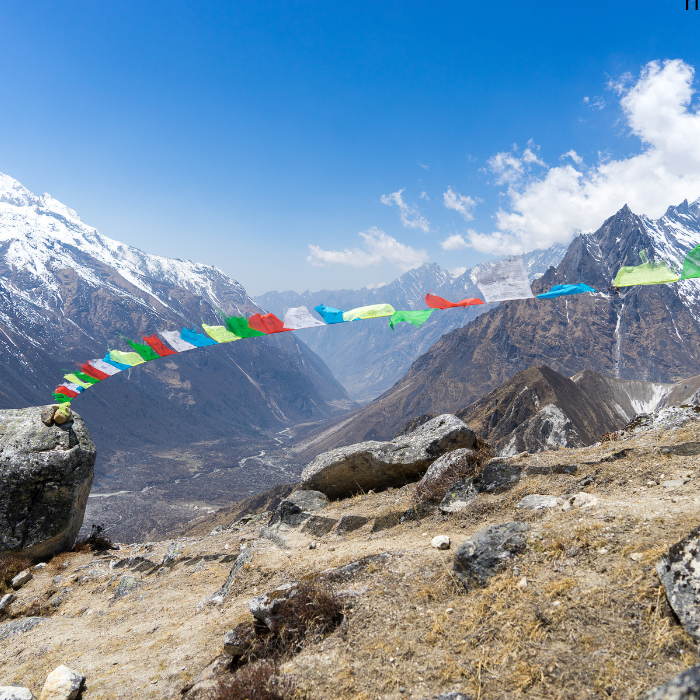
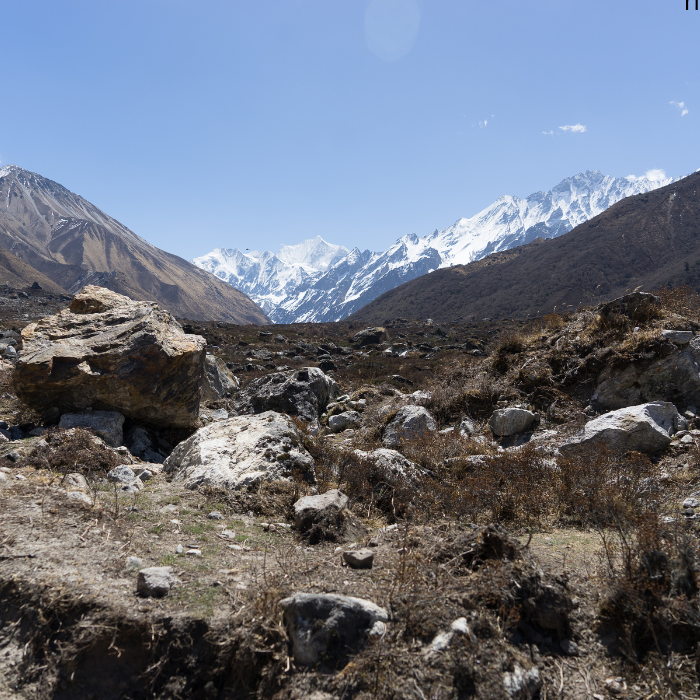
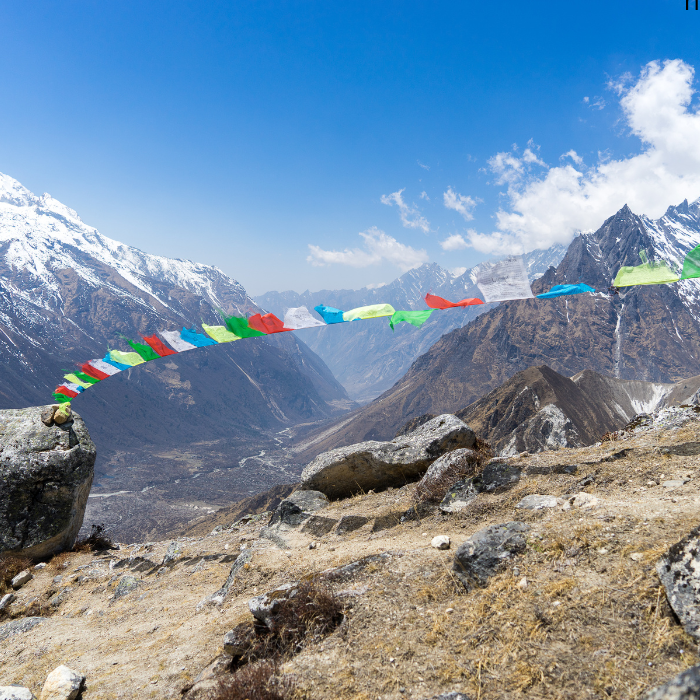
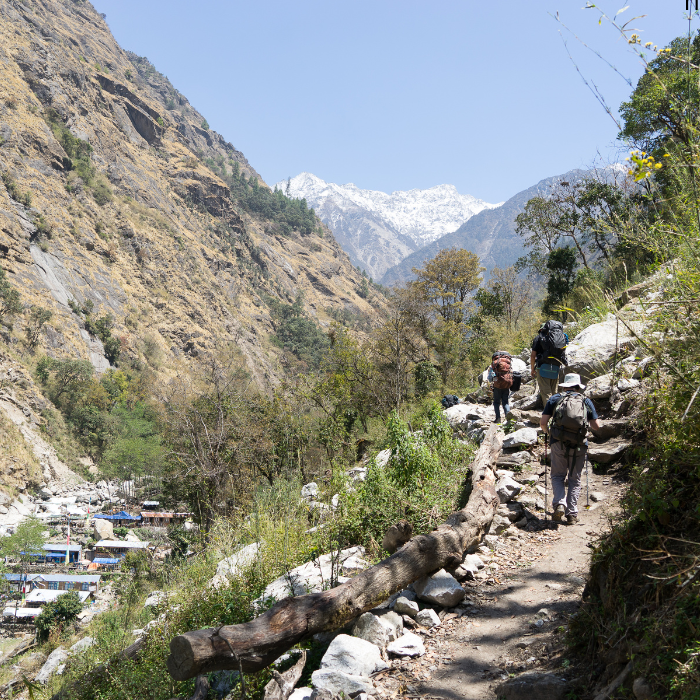


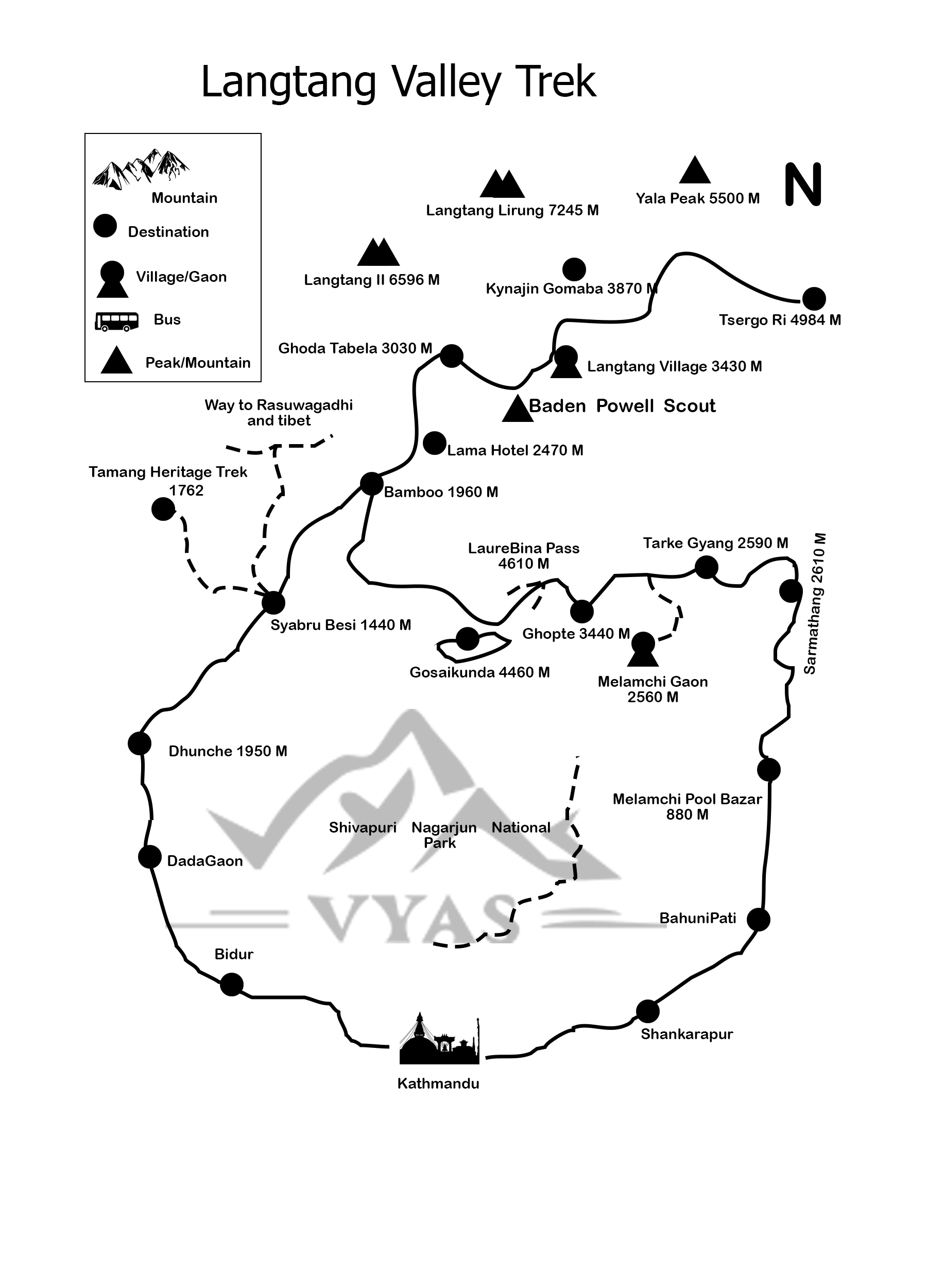






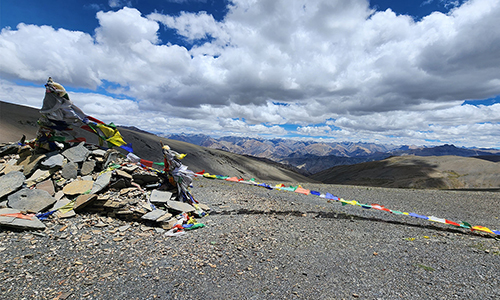

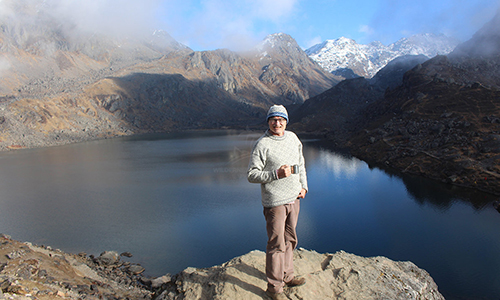


Emily Carter
2025-06-16 12:35:14
The Langtang Valley Trek with Vyas Treks Nepal was a fantastic adventure. The trail passed through beautiful forests, traditional Tamang villages, and stunning mountain views. Our guide was friendly and very knowledgeable, making the experience both safe and enjoyable. The local hospitality and peaceful atmosphere made this trek truly special. Highly recommended for those seeking a less crowded Himalayan trek.